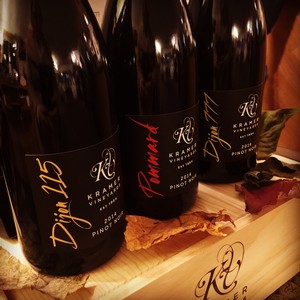Game of Clones: Pinot Noir
I never really gave a clonal choice too much thought until recently. As a second-generation winemaker with an established vineyard, our clonal selections were made many years before I decided to pursue a career in wine. Why focus on this aspect when so many variables are at play—soil type, elevation, vine density, vine age, slope, trellis system, own-rooted or grafted? Aside from the differences in ripening time, are the clones of Pinot Noir all that distinguishable, or is it trivia?
There are more available clones of Pinot Noir than any other grape variety. When we established our vineyard in 1984, three clones were available: Pommard, Wädenswil, and Gamay Beaujolais. The Dijon clones, such as 114, 115, 667, etc., began entering Oregon in the late 80s and early 90s. These clones may differ in several ways—cluster size and shape, berry size, color, early or late ripening, etc. Now there are over 50 clones of Pinot Noir available in the United States, and we’re up to 9 at our estate.
As interest in these new clones has increased, we began to study them more closely in our vineyard. The higher crop levels in 2014 led us to introduce a series of single clone wines of Pinot Noir: Dijon 115, Dijon 777, and Pommard. We followed similar winemaking protocols for these to allow for the most explicit clonal expression possible. The fruit was harvested by hand, and 25% whole clusters were layered on the bottom of 1-ton vats and topped with destemmed fruit. After a 5-day cold soak, fermentation began. The must was pumped over, punched down twice daily, and pressed at dryness. The wine was aged in neutral French oak barrels for 14 months and bottled.
